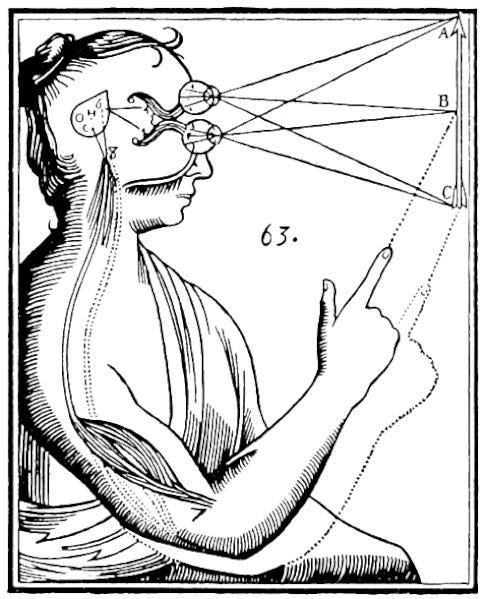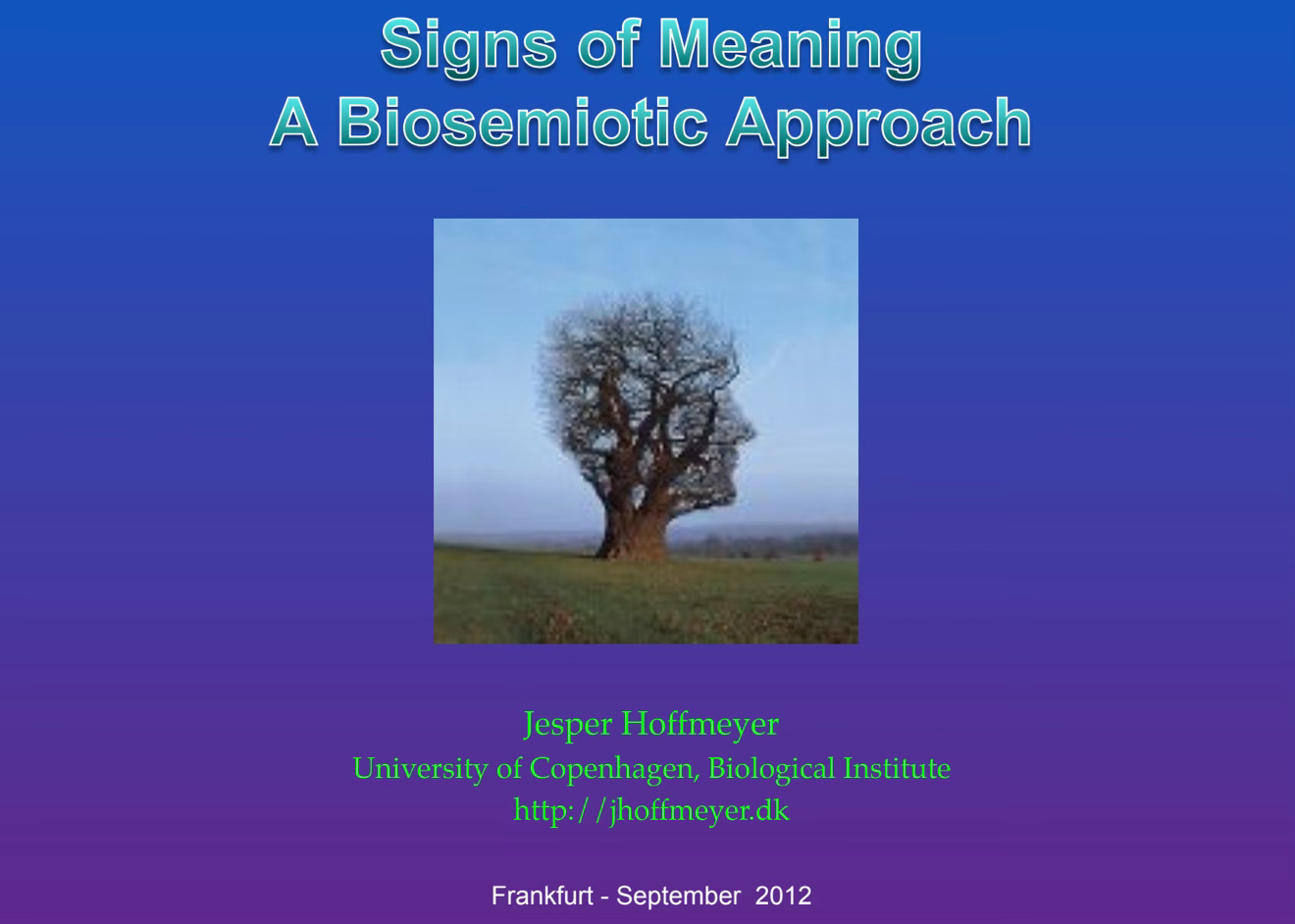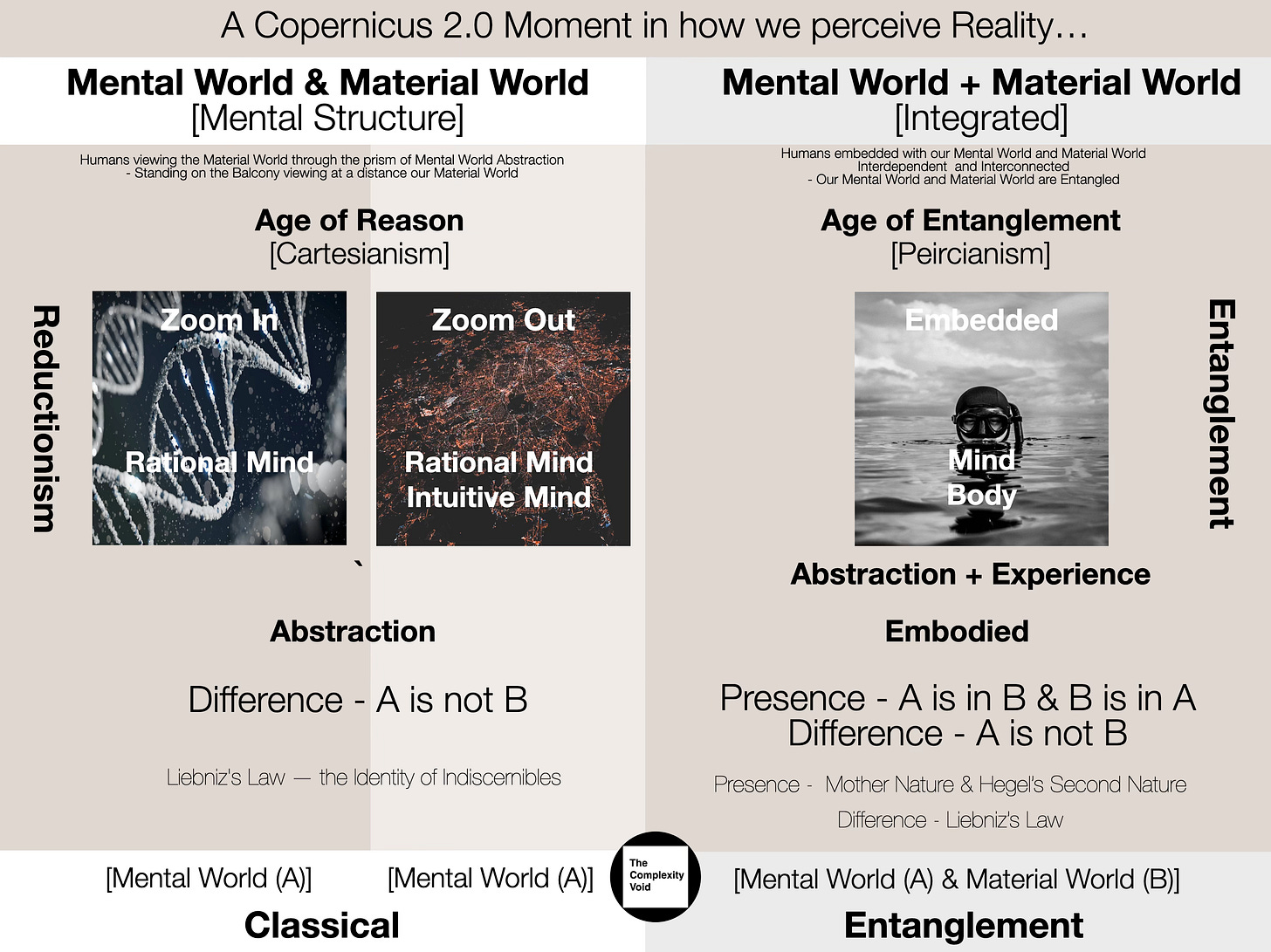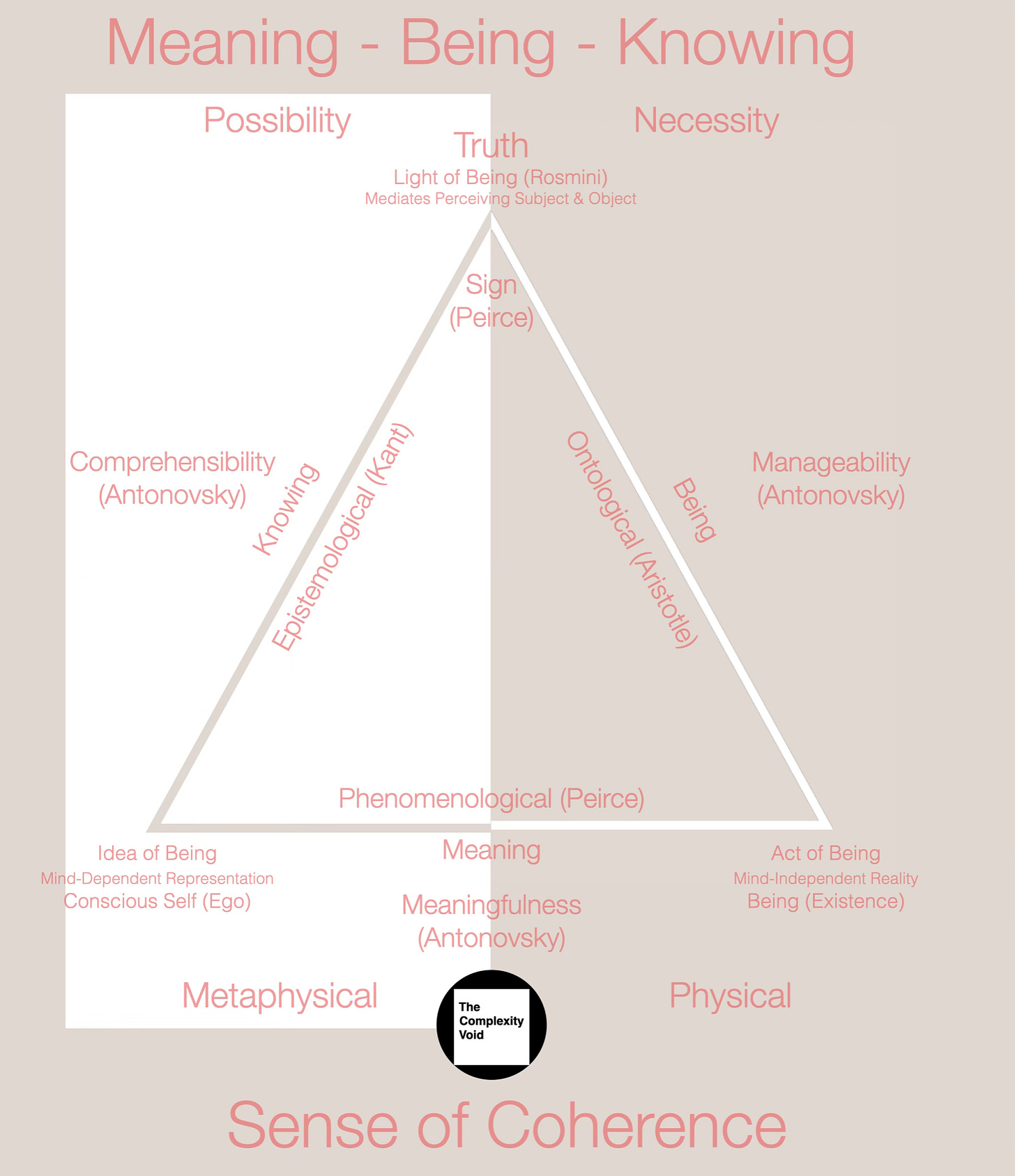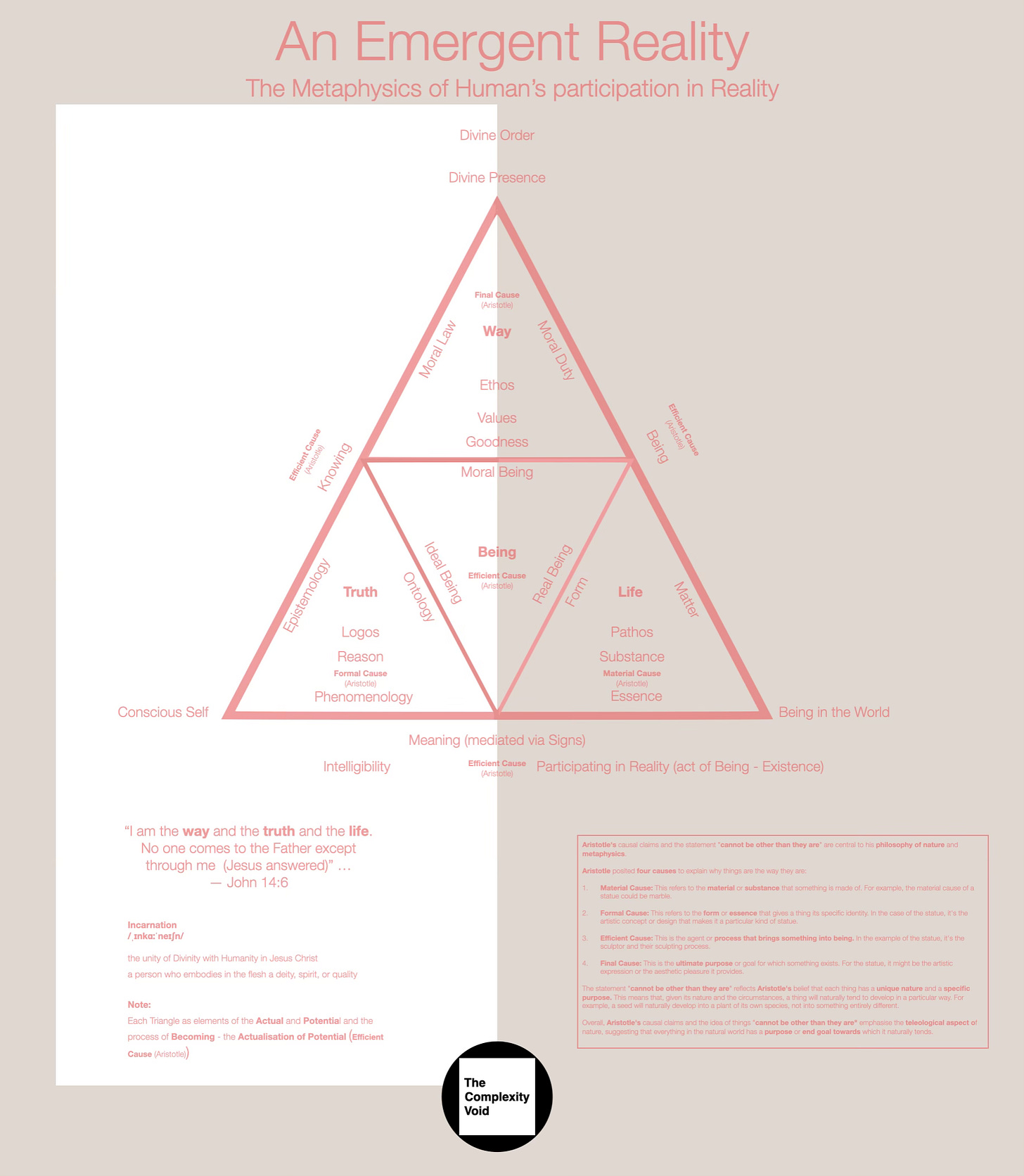Sense of Coherence
Synthesising Peirce and Antonovsky
Photo by Luís Eusébio on Unsplash
“We are coming to understand health not as the absence of disease, but rather as the process by which individuals maintain theirsense of coherence(i.e. sense that life is comprehensible, manageable, and meaningful) and ability to function in the face of changes in themselves and their relationships with their environment”…
— Aaron Antonovsky
Human Beings are Metaxic Semiotic [LINK] [LINK] [LINK] [LINK] in nature.
They frequent a space in between two Worlds.
The physical world of our entangled being in the natural world (act of Being - substance - existence - this Being’s relationship to Being - entangled).
The metaphysical world of ideas, concepts, beliefs and habits of mental abstraction (idea of Being - intelligibility - Conscious Self (Ego) - Individual).
These two Worlds are interconnected and interdependent.
Our actions shape our beliefs, and our beliefs shape our actions.
In other words, our ideas have real-world consequences.
We are embodied in the World and our beliefs must lead to actions to navigate our participation in Reality and not just tentatively theorise through Cartesian abstraction & reductionism.
“Reality is what we take to be true. What we take to be true is what we believe. What we believe is based upon our perceptions. What we perceive depends on what we look for. What we look for depends on what we think. What we think depends on what we perceive. What we perceive determines what we believe. What we believe determines what we take to be true. What we take to be true is our reality”…
— David Bohm
Through the application of Leibniz Law ( Identity of Indiscernibles) Descartes distinguished between Res Cogitans (Mind - for example - Idealism ) and Res Extensa (Matter - for example - Materialism).
Cartesian Dualism reflects this distinction (i.e. Difference - A is not B - Mind is not Body), however, how these two different types of Being interact remained unclear at the time.
René Descartes, Public domain, via Wikimedia Commons
It was a worldview anchored in a Substance Dualism that distinguished between the Metaphysical and Physical.
The Emergence of Semiotics - Peirce’s Triadic
“The old dualistic notion of mind and matter, so prominent inCartesianism, as two radically different kinds of substance, will hardly find defenders to-day. Rejecting this, we are driven to some form of hylopathy, otherwise calledMonism” …
— Charles Sanders Peirce
It was in the late 19th and early 20th Century that new ideas and theories emerged in relation to Semiotics (Study of Meaning) from both Swiss linguist Ferdinand de Saussure (Dyadic Semiotics - European Structuralist) and American philosopher Charles Sanders Peirce (Triadic Semiotics - Pragmatic Maxim) that opened-up new frontiers of thought to explain how res Cogitans (Metaphysical) and res Extensa (Physical) interact.
Peirce was a Monist and viewed Reality as One.
His ideas could be distinguished from Spinoza (Substance Monism) and Hegel (Ideal Monism - Absolute Idealism).
Instead, through developing his Phenomenological Categories of the Whole (Firstness, Secondness and Thirdness), he was able to provide a metaphysical framework that bridges Idealism with Materialism.
The breakthrough was enabled through his Theory of Semiotics (Study of Meaning) and the role that Signs play in our understanding of Reality.
Note: Peirce’s metaphysical framework bridges Idealism with Materialism. It does this through replacing Descartes’ Sensory Machines with Peirce’s Sensory Semiotics. [ LINK ] - Signs of Meaning - A Biosemiotic Approach
The role of signs in simplistic terms is akin to a software application programming interface (API) that enables interactions between the Metaphysical and Physical to communicate representations of meaning between the Observer and Observed.
His Semiotic Triadic brings together the Conscious-Self (Ego) with the relationship of this Being (Dasein) to Being (Sein)(Heidegger).
An Intentional Consciousness (Husserl).
An Observer (Interpretant) and Observed (Object) mediated via Signs (Signifier - Representamen ).
“But by “semiosis” I mean, on the contrary, an action, or influence, which is, or involves, a cooperation of three subjects, such as a sign, its object, and its interpretant, this tri-relative influence not being in any way resolvable into actions between pairs”…
– Charles Sanders Peirce
Furthermore, his Pragmatic Maxim provided the normative principle for his Semiotics, where the meaning of the concept of abstraction (Metaphysical) can be construed from its practical effects (Physical).
His ideas provided a Third Category of Thought to the development of Metaphysics (i.e. Study of Being).
The Triadic Categories of Thought that enabled us to triangulate and bring an intelligibility to Reality were now complete:
Aristotle’s Ontological Categories developed our understanding and boundary constraints of What can exist? (i.e. Being);
Kant’s Epistemological Categories developed our understanding and boundary constraints of What can we know? (i.e. Knowing); and
Peirce’s Phenomenological Categories developed our understanding and boundary constraints of What does it mean? (i.e. Meaning) - a Unity of the Conscious Self and Being.
A Geometric Metaphysical Unity [LINK] of Being, Knowing and Meaning [LINK] that was similar to Aristotle’s Physical Unity of Substance [LINK] that consisted of Material, Form, and Essence [LINK].
“Thou shalt not alter the consciousness of thy fellow man.
Thou shalt not prevent thy fellow man from altering his own consciousness“…
- Timothy Leary
It represented the idea of a Cognitive Liberty [LINK] of Human Being that reflected a Property Dualism [LINK] (i.e. in contrast to Descartes’ Substance Dualism [LINK]) of the Conscious Self (Ego) [LINK] and Being [LINK].
[LINK] - The Real Distinction - Essence, Existence and Intelligibility
It also recognised three modes of Being (Peirce - Firstness, Secondness and Thirdness) [LINK] and three modes of Human Consciousness (Peirce - Primisense, Altersense and Medisense) [LINK].
“If we glance at the most important revolutions in history, we see at once thatthe greatest number of these originated in the periodical revolutions of the human mind”…
— Wilhelm von Humboldt
It was a Copernicus-type moment [LINK] which reflected how Human Beings were entangled in the World (i.e. this Being with Being - Part of the World) rather than viewing Reality from a distance balcony of Cartesian abstraction (i.e.Apart from the World) [LINK].
Note: Presence reflects a Human Being’s participation in Being through the act of Being (existing). Difference reflects the Cognitive Liberty [LINK] of the Conscious-Self. Rather than a Substance Dualism (i.e. Descartes) these ideas reflect a Property Dualism that can be interpreted through the prism of Leibniz’s Law. They also integrate the Ancient Indian Philosophy (Nyaya and Vaisheshika) concepts of Negation (an ontological concept anchored in a duality - absence and presence) and Inherence (the mechanism by which parts come together as a whole that recognises the differences between parts & wholes and substances and qualities. Inherence cannot be reduced).
It represents a jump-state shift in Human Consciousness from an Age of Reason to an Age of Meaning [LINK].
A shift predicted and envisaged by Jean Gebser in the mid-20th Century [LINK] from a Mental Structure to an Integrated form of Consciousness.
[LINK] - The dawn of the Age of Meaning
Peirce and Western Civilisation Metaphysical Triadic Relationships
The essence of Charles Sanders Peirce’s Philosophical and Metaphysical Framework was his Monism that shapes his Phenomenological Categories of Thought and recognises the Metaxic Semiotic nature of Human Being that brings an intelligibility and objectivity to our understanding of Reality through a Unity of the Whole.
They are also ideas that align closely with Western Civilisation Intellectual Tradition before the emergence of Modernity and Post-Modernity that saw a re-orientation of our understanding of Reality to the Primacy of Man [LINK] (e.g. Theology of Marxism ) and Primacy of Human Consciousness [LINK] [LINK] [LINK] (e.g. Cartesianism, Nietzschean Perspectivism, Modern Gnosticism).
The idea that Man participates in Reality through his Contingent Being whose existence (i.e. act of Being - Created) emerges from the final cause (i.e. Necessary Being of God - the Creator).
An understanding of Reality that reflects the triadic relationship between God, Conscious Man and the Natural World (Thomist Scholastic Philosophy) [LINK].
Unity of the Whole
This same Unity of the Whole that can be expressed at the individual level through the idea of Human Personhood - Acting Person [LINK] and at a system level through Human’s entanglement in the Natural World through the act of Being (i.e. this Being’s relationship with Being (Heidegger)) has also been considered by other leading intellectuals.
For example, Aristotle’s Four Causes [LINK] at a system level that enables our understanding of Nature.
For example, Rosmini’s Triadic of Being [LINK] at the individual level that enables Human Being to be understood through the prism and distinction between Real Being, Ideal Being and Moral Being.
More recently, the 20th-century Aaron Antonovsky - an Israeli American sociologist and academic - explored the relationship between stress, health and well-being of individuals in Society [LINK].
In doing so, his ideas bridge the distinction between the individual and the societal system in which they are entangled.
Ideas that are very aligned with Charles Sanders Peirce’s notion of the Unity of the Whole.
Conscious Man’s (Metaphysical) relationship to the Natural World (Physical) and how that relationship is mediated via Meaning.
Antonovsky’s Sense of Coherence
Antonovsky, during his period at an Israel-based medical school where he held the Chair in Medical Sociology, developed an integrated theory of health and illness that culminated in his 1979 book Health, Stress and Coping [LINK].
The key hypothesis of Antonovsky’s theory was how specific personal dispositions make individuals more resilient to the pressures they encounter in daily life.
Antonovsky identified three components, which he claimed helped a person remain healthy and better cope by providing a sense of coherence [LINK] about life and the challenges faced.
It combined a state of optimism and a sense of control.
His theory reflects an integrated way of how Humans navigate the complexity of Reality.
One that combines Mental World abstraction — cognition & motivation — and Material World participation - embodied experience & agency.
These two Worlds are brought together through meaning.
The three components of his Sense of Coherence theoretical model included:
Comprehensibility — a cognitive (Mental World) aspect that reflects the extent to which you might perceive both internal and external stimuli as being understandable in some rational way;
Manageability — a behavioural (Material World) aspect that has to do with the degree to which you might feel that there are resources at your disposal; and
Meaningfulness — a motivational (Mental World + Material World) aspect that has to do with the extent to which you feel that your life has some emotional meaning.
A framework that clarified the importance of integrating our Minds and Bodies, together with the World we inhabit.
Synthesising Peirce and Antonovsky
The above diagram highlights how the ideas of Peirce and Antonovsky align in a natural way of orienting Human Beings to develop a Unity of the Whole.
A Unity that integrates:
the Mind and Body of the Individual; and
this Being (Dasein) with Being (Sein) (Heidegger).
Human Consciousness is intentional (Husserl), and meaning (via Signs) mediates the Metaphysical and Physical (Peirce) (Antonovsky).



